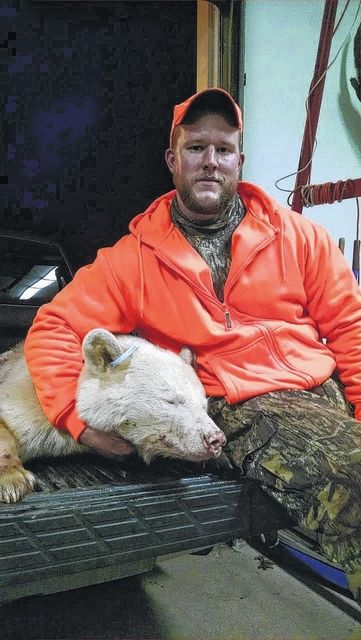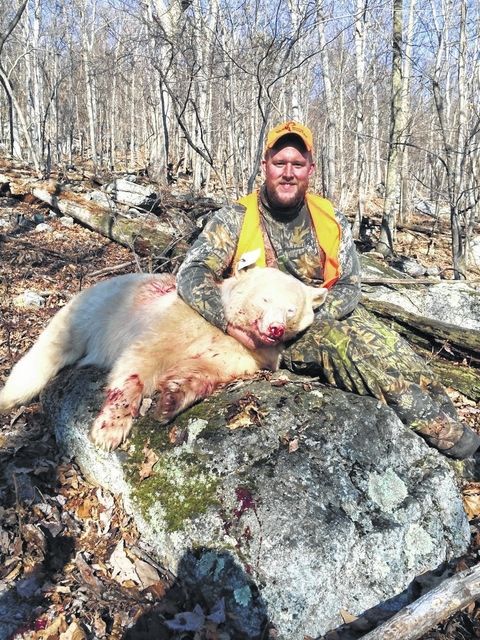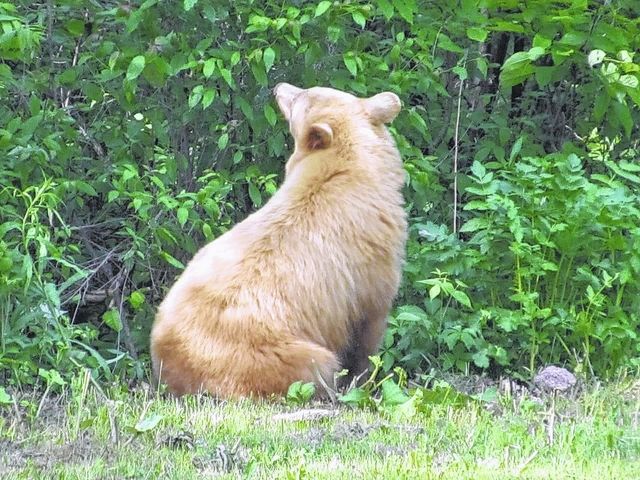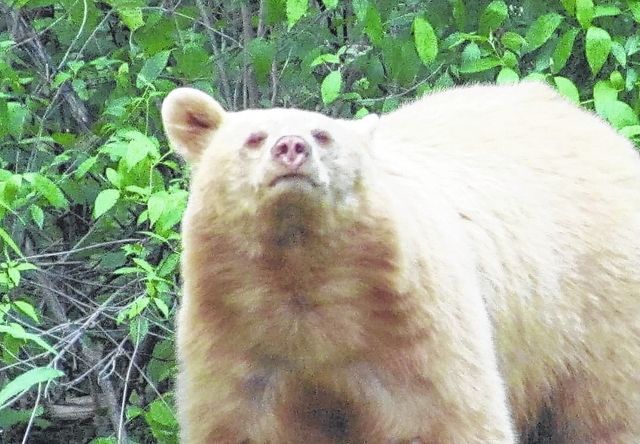Click here to subscribe today or Login.
Jeremy Gross couldn’t move.
Standing just 10 yards from the bear he had just shot, Gross just stood and stared.
The 26-year-old Bloomsburg resident had harvested a black bear in Pennsylvania before, but the one he downed during the extended bear season earlier this month was different.
Unlike any other bruin most people had ever seen.
This particular black bear was pure white. An albino, complete with a pink nose and eyes.
“It was the biggest rush I ever had hunting,” said Gross, who has hunted since he was 12 both in Pennsylvania and out of state.
Gross shot the albino bear on Dec. 4 in Beaver Township, Columbia County, which is in Wildlife Management Unit 4E. The extended bear season in that WMU runs from Dec. 2 – 5, and Gross used a vacation day from work so he could hunt.
There was talk in the area of a white bear and reported sightings here and there, but Gross said he never saw the bear and didn’t even know if its existence was true.
But on Dec. 4 during an afternoon hunt the myth became a reality when Gross joined a group of family and friends to make some drives for deer and bear on a private hunting club. After completing the second drive of the day, the group took a break and Gross, who was by himself, saw a bear standing on an open hillside.
It was the white bear that everyone had been talking about.
Gross quickly got the bear in his scope and downed it with a shot from his .270.
As he approached, that’s when reality kicked in.
“When I got up to it my legs just locked up. Other members of our group came down and no one could believe it. It was surreal,” Gross said.
And extremely rare. Albinism is seen in other species, such as deer and squirrels. But in black bears it’s a seldom-seen occurrence.
Especially in Pennsylvania.
Mark Ternent, the Pennsylvania Game Commission’s bear biologist, said he has only heard of four albino bears in the state during his 15-year career with the agency. In 2007, according to Ternent, an albino bear was killed by a hunter in Centre County. Ternent also believes there was an albino harvested some time ago in Schuylkill County, and last year he reviewed a trail camera photo of two cubs in Mifflin County that appeared white.
Albino black bears are far more rare that brown-phase, which includes cinnamon bears, that occur in less than 1 percent of the population, Ternent said.
Kevin Wenner, biologist for the PGC’s Northeast Region, said Gross’s bear was the first albino he ever heard of in his career. Wenner was working at the bear check station in Dallas the day Gross harvested the albino bruin. He said there was a lot of talk about the harvest and he hoped the bear would be brought to Dallas.
“We heard from another hunter who saw the bear on Monday, but the extended season wasn’t open then,” Wenner said. “When the bear was harvested on Dec. 4, it was really spreading on social media. Someone brought a bear in that day and told us about the albino being harvested, and an hour later it showed up.”
Before Gross got to the check station with the bear, he had to get it out of the woods. Right away Gross said he knew he would get a full body mount done, so the group carefully drug the bear to a lane where it was loaded on a cart and hauled back.
“A lot of people we passed with the bear stopped us and wanted to get pictures. No one ever saw anything like it before,” Gross said.
On the way out of the woods, Gross shared a moment that felt just as meaningful as actually harvesting the bear.
“My father, Joe, met up with us and gave me a big hug,” he said. “Hunting, especially bear hunting, is a bond my father and I always shared. To see him so excited for me, that was the next best thing that happened that day.”
On the way to the check station Gross said his cell phone was ringing non-stop from friends, family and even taxidermists who heard about his harvest and wanted the opportunity to mount an albino bear.
When they finally arrived at the Dallas check station, Gross couldn’t wait to get the bear inside.
“I was excited to show it to the Game Commission. I wanted to learn more about it,” he said. “They knew we were coming.”
Wenner said the bear, a sow, had a field-dressed weight of 138 pounds and an estimated live weight of 163 pounds. A tooth was pulled to age the bear, and Wenner said the results would be back next summer. He said the bear, which had cubs that were black, was likely just under 4 years old.
“It was a good-sized sow and appeared to be in good health,” Wenner said. “Being an albino didn’t impact her health.
“It was a remarkable opportunity to actually see this bear. It might be the only one I ever see.”
Gross said the bear is at a taxidermist and he and his wife have already picked out a spot in their home to display the mount when it’s finished.
In the meantime, Gross keeps replaying the memories of that special hunt.
“To actually harvest something in a fair chase, ethical hunt that was that rare, words can’t even explain it,” he said. “No other hunting memory I have even remotely compares to this.”









